Tip 10: Be mindful of the local driving conditions and customs
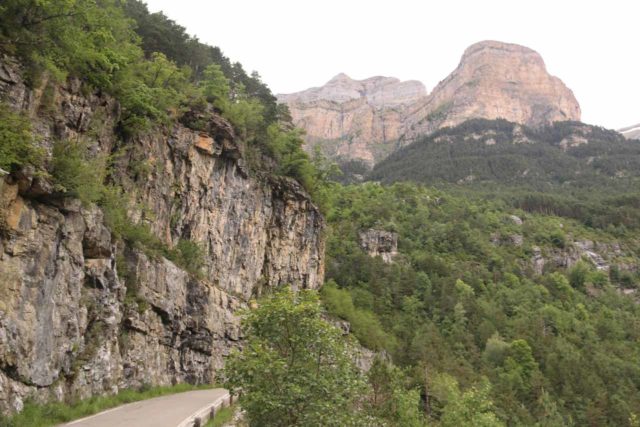
This last tip is kind of a common sense catch-all for all the things to consider concerning the driving conditions before hiring the car (as you choose the kind of car you want) as well as during the car hire as you try to adjust to these local driving conditions.
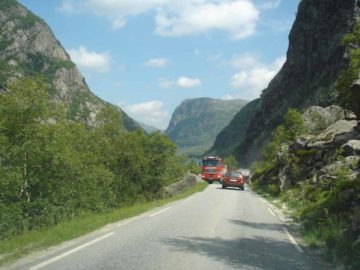
Road sizes and how it impacts the car you choose to hire
Let’s first start with how respecting the local driving conditions and customs can impact the kind of car you choose before you hire the car. In our experience, when we intend to drive in Europe, we’ve learned that the roads tend to be very narrow and often times rough (thanks to cobblestone streets) and steep. There are even times when street parking or parking partially on curbs (like in the UK) could wind up turning a typically wide two-lane road into a single-lane bi-directional road. Indeed, we’ve learned that the towns and cities can get quite crowded, which means space is at a premium, and thus parking spaces are also very tight.
Therefore, it would make a lot of sense to hire a car that was small. Of course, it can’t be so small that it couldn’t fit our luggages or our third passenger (e.g. our daughter with her car seat). And it might be too hard to try to conceal the luggages from opportunistic thieves looking for their next break-in victim. But at the same time, the rental car can’t be a giant road hog making it impractical to drive the narrow alleyways and mountain roads as well as trying to park with it. So to that end, we tend to hire a small- to mid-sized car. The intermediate-sized car is probably as large as we can go. However, compact cars might be too small for us unless it was just Julie and I traveling alone.
If we’re driving in New Zealand or Australia, we don’t have to deal as much with such tight alleyways and parking spaces (mostly because those countries have more wide open spaces). However, we still can’t get too complacent since their roads are still not as wide as the ones we’re used to in the United States, plus there aren’t that many multi-lane highways so we definitely have to be very patient when trying to pass slower cars on those two-lane roads.
Letting faster drivers pass
Speaking of the prevalence of two-lane roads, this is why I advocate liberally using pullouts and passing lanes to let faster drivers pass. There’s no need to induce stress for yourself and the driver behind you by being stubborn about not letting people pass. That said, the opportunities may be limited to exercise pullouts or passing lanes given how a lot of roads lack shoulders or space in general. But try to do the courteous thing and let people who are more familiar with the roads or have somewhere to go at greater haste than you pass. I guarantee you, your drive will be less tense and you might even get a thank you gesture (usually with two strobes of the hazard lights) from the person doing the passing.
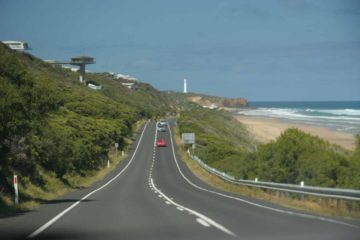
Which side of the road do you drive on?
Another thing to consider is which side of the road you’re on. While we in the United States are used to driving on the right side of the road (i.e. driver side of the car is on the left as the driver is almost always closer to the middle of the road while the passenger side is closer to the curb), you’d be amazed at how much of the world actually drives on the left side of the road. If we have to drive on the left side of the road, the driver side of the car is now on the right. Again, as long as you remember the driver sits closer to the middle of the road while the passenger sits closer to the curb, this simple rule should at least help you stay oriented (as it would feel weird to be sitting closer to the curb than the middle of the road when driving).
Just to give you an idea of how much of the world drives on the left, we’ve driven on the left in Australia, New Zealand, Fiji, the United Kingdom, and even Japan. There were also many other countries that drive on the left like a large part of sub-Saharan Africa, Thailand, and India (though for these countries, we wouldn’t want to drive so this is less of an issue here).
When operating the car, you also have to get used to doing things with the opposite hand. For example, if you’re used to driving on the right, you usually flip the turn signal with the left hand and the windshield wipers with the right. You also shift gears with manual transmission (or even automatic transmission) with the right hand. Conversely, if you drive on the left, then you typically would flip the turn signal with the right hand and the windshield wipers with the left (though I’ve driven a Lancer in New Zealand where this was flipped around causing some confusion where I’d often flip the windshield wipers when I intended to flip the turn signal and vice versa). Meanwhile, you would be changing gears with the left hand, which might take some getting used to. Fortunately, you don’t have to remember the order of the pedals (clutch on far left, brakes in middle, accelerator on far right), because they’re the same regardless of whether the car was meant to be driven on the right or on the left.

Roundabouts
Other things to be mindful of are the roundabouts (there are fewer traffic lights abroad than what we’re accustomed to in the United States) so if you’re driving on the left side of the road, you go clockwise when the opportunity presents itself, while if you’re driving on the right side of the road, you go counterclockwise (or anticlockwise) when you have the opportunity to get in. By the way, please do signal when trying to leave the roundabout, especially when crossing lanes to let the other drives know someone is breaking the circular pattern.
Roundabouts can be particularly daunting when there are at least three or more lanes as it’s possible to have to cross through multiple lanes to reach a particular exit. It can be especially confusing if a given roundabout has more than four exits, or even has stop lights in the middle of the roundabout itself! Believe me, I’ve had many instances of taking the wrong exit at such roundabouts, and the key is to not panic and let the GPS (provided it’s up-to-date and accurate) help you find alternate routes to get you to where you need to go.
No free right turns
In most of the world, there is no free right turn (if driving on the right) or free left turn (if driving on the left). This means, you not only have to come to a complete stop at the lights, but you can’t proceed until your light turns green (indeed, that free turn seems to be an American thing).
Right-of-way on conflicts with turns
If you drive on the right side of the road, the left turn is across traffic and longer. Conversely, if you drive on the left, the right turn is across traffic and longer. It’s possible to have a conflict when a person making the longer turn does so at the same time a person makes the shorter turn to the same street or lane. So to arbitrate this conflict, generally the priority goes to the driver making the shorter turn. So if I was making a right turn onto a different street while someone is making a left turn onto that same street that I’m going on, I would have the right-of-way.
This seems to be the convention in most parts of the world (certainly in the United States), but there is a notable exception in New Zealand. In that instance, the person making the longer (right) turn gets the priority over the person making the shorter (left) turn. This frequently results in situations where we’d wait to make our right turn while the person making the left turn onto the same street would insist that we go first. Conversely, if we were making the left turn, the person making the right turn would race in front of us to remind us that they have the right of way.
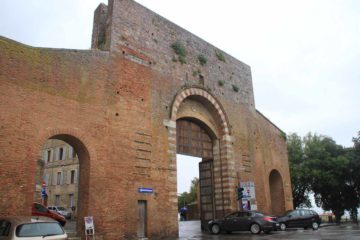
Restricted Traffic Zones
Restricted Traffic Zones are basically pedestrian-only zones or vehicle-free zones. They may have various acronyms like ZTL or Zona Trafico Limitato in Italian. Anyways, these zones typically occur in historical city centers or town centers. This is a major reason why European cities are so charming and so compact in the first place (because they don’t allow vehicles to drive through such areas and kind of ruin that charm). They’re denoted with the universal symbol of a red-rimmed circle with big white filling in the middle.
When you see such signs, it basically means don’t try to drive through unless you have special access priviledges (typically if your hotel can hook you up with a permit to offset the inevitable citation). There are hidden cameras placed at just about every one of these restricted zone entrances so the authorities pretty much know if you’ve gone where you’re not supposed to go, or even if you’ve gone the wrong way on a one-way street. I’ve had a co-worker get his ticket several months after his trip was over after going the wrong way on a one-way street out of frustration from having a hard time finding his accommodation in a city center near Naples, Italy.
This kind of traffic restriction is also a major reason why it’s wise to first find public parking (preferably a structure), then walk to the accommodation when checking in to see if there’s a better alternative to park closer. If the alternate or closer parking spot exists, at least the people at the accommodation can tell you how to drive there. Without this guidance, it’s pretty hard to navigate the city centers along with the chaotic traffic, the keep-out zones, and the one-way streets. Indeed, you could wind up wasting valuable time (and money) figuring out where to go.
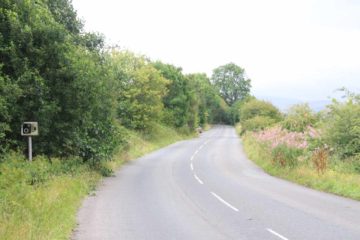
Speed Cameras
Most of the main streets and highways have automatic cameras that try to take a picture of offenders by capturing the face of the person driving and the license plate number as it happens. Usually, there are signs warning you that there’s an upcoming camera (typically an icon of a camera as opposed to words) so there is some heads up that you’re about to approach it. The bottom line is to respect the speed limits (15-30km/h in built-up areas and 80-100km/h or even 120-140km/h in high-speed highways) and drive defensively.
In addition to the automated stationary cameras, many police cars also have speed cameras (with visual captures in addition to the radar) to capture the offense. So they don’t necessarily have to pull you over to catch you. Sometimes, they’ll just send the photo and the evidence of when it occurred to your rental car agency and have them pass that fine onto you. I’ve had this happen to me on my first day driving in New Zealand back in 2004, and Maui Rental Car charged me an additional penalty on top of the speeding fine when I returned the car.
And say if you do get a traffic fine for speeding but you try to find a way to avoid paying for it, the rental car companies do have your credit card information so they’ll charge your credit card the penalty amount. Then you can try to dispute it with the credit card company, but I’m sure the “seller” will have a pretty solid story behind why this dispute would be erroneous under such circumstances. The bottom line is that you mind as well pay the fine anyways and avoid dragging out a losing battle.

Parking
The same situation arises in parking violations as well. You can try to avoid paying for it, but the rental car company has your credit card information and will charge directly to it. Sometimes, the rental car company will just be a conduit to the governing authority that issued out the parking citation. So how easy is it to get into this mess in the first place?
Well, allow us to tell you what happened to us while we were parking at a meter in Caernarfon, North Wales. We didn’t have enough change to get us past two hours. Unfortunately, Julie insisted that we have lunch at a sit-down place, and then we toured the Caernarfon Castle, which takes more than an hour to tour. Little did we realize that there was a flat rate parking area behind the castle until it was too late when we were already within the castle complex. So to make a long story short, when we returned to the car, we saw the ticket in a waterproof plastic cover pinned to our windshield, and we owed 50 pounds. We had the option to pay early online to reduce the fine, but we were lazy and eventually paid the full 50 pounds months later from home.
The bottom line is that parking can be scarce in the cities, and you have to pay very close attention to the signs in terms of how long you have to park at the meter, and whether you can’t squat there and keep feeding the meter (assuming you have the loose change to keep the meter maid happy). In order to play it safe, we tend to prefer structured parking, where you take a ticket, then feed it to a machine and pay to validate it on the way out. Then, insert that validated ticket at the barrier to raise it and leave the car park. You just have to watch out for the tight corridors upon exiting, because this was how I managed to break off the side view mirror on our recent Spain trip.
Toll Roads
While I’ve mentioned earlier in this article about how toll roads can increase the overall cost of renting a car, there’s actually a silver lining. We’ve noticed that most of the highways requiring tolls tend to have the best conditioned surfaces as well as the least traffic. So often times, we would prefer going the toll road route if we’re interested in saving precious time as opposed to going a longer distance with more traffic to save money. That’s definitely something to consider when choosing your driving route to get from point A to point B.
Now there is one drawback to toll roads that might annoy the heck out of American drivers. It’s that such roads have fewer exits (i.e. they could be spaced at least 5-10 minutes or more apart from each other. So if you find yourself missing an exit, it might take a bit longer than expected to exit, go back the other way, and then finally take the correct exit (with an additional toll for the extra distance driven).
Other nick nacks
I’m sure there are many more of these little caveats when it comes to respecting the local driving rules and regulations as well as conditions. For example, air conditioning in the car is pretty vital if the weather can get hot. Moreover, cigarette lighters that work are important for keeping the navigation device charged as well as possibly our phone being charged if we brought a splitter or had additional cigarette lighter sockets. And the USB interface might be helpful for filling the silence with some music for those long drives when the local radio stations aren’t doing the job entertaining us. The list goes on and on, but I’m sure you get the idea about picking your rental car carefully.
Visitor Comments:
Got something you'd like to share or say to keep the conversation going? Feel free to leave a comment below...No users have replied to the content on this page
